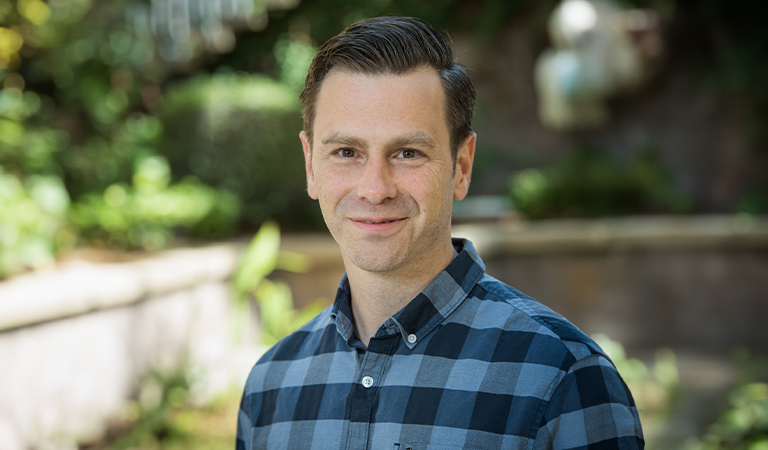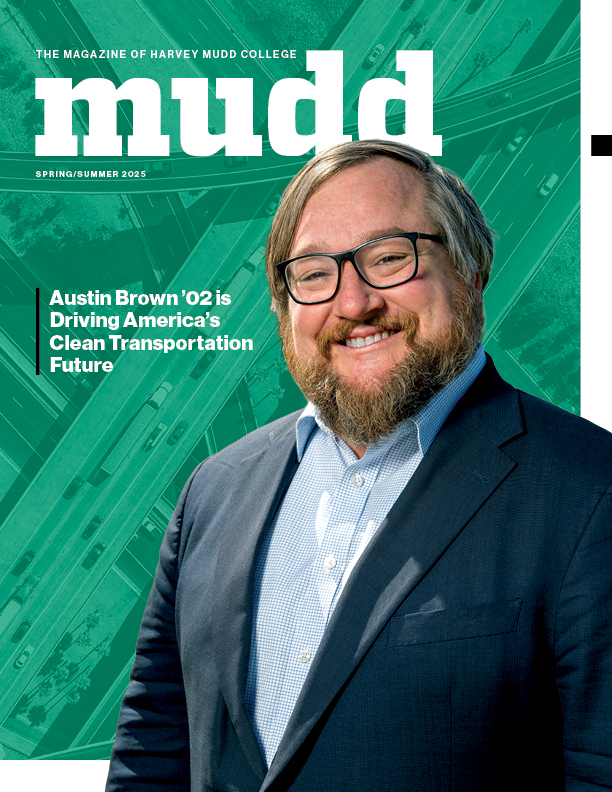Physicists Discover Inherent Property of Biological Materials that Explains Mechanical Efficiency of Tendons
January 31, 2024
Harvey Mudd College physics professor Mark Ilton and four of his students are celebrating the publication of their work in the Journal of the Royal Society Interface, which publishes articles of high-quality research at the intersection of the physical and life sciences.
Lead author Lucien Tsai ’24 along with Ilton and co-authors Paco Navarro ’25, Ingrid Wu ’23 and Taylor Levinson ’25 performed summer research in Ilton’s Physics of Soft Matter (PoSM) Lab that resulted in their paper, “Viscoelastic materials are most energy efficient when loaded and unloaded at equal rates.” As the paper’s self-explanatory title suggests, the research describes the results of the group’s investigation of the mechanical energy efficiency of biological springs (e.g. tendons).
“By understanding the properties of these materials,” Tsai says, “we can extract principles for the design of bio-inspired spring-driven mechanisms. This study examines how the differences between the loading and unloading rates of these springs shape their performance.”
The findings, obtained through innovative mechanical experiments, and, in collaboration with biologists from the University of California, Irvine, unveil a crucial connection: symmetric rates, characterized by equal loading and unloading durations, offer superior mechanical efficiency. “Using a mathematical model, we find that an inherent property of biological materials is responsible for this rate-dependent effect: their hierarchical structure that imparts a broad range of relaxation times results in an efficient response to symmetric rates,” says Tsai.
Ilton says Tsai, who worked on the project since its inception in 2021, helped steer the research in a different direction than Ilton had expected. “My original suggestion about how to model the tendon’s response to different loading and unloading rates was completely inadequate,” Ilton says. “I suggested a simplified model with a single characteristic time in the material. It was Lucien who had the idea to take a different approach, and he included a range of characteristic times in his model of the tendons. It was this insight that led us to one of the paper’s main findings: the reason why tendons are so mechanically efficient when you load and unload them at the same rate is because they have a broad range of characteristic times in their material relaxation.”
“Having your first paper published is an exciting moment!” says Ilton of his students. “The students discovered something new, which can be a really addictive experience. Not only does this paper help the students establish their track record as scientists, but they also experienced a rigorous peer review process. I think that having to address critique of your work in a positive way builds skill and character, which is something that translates well into life more broadly.”
This project was made possible by donors to the College’s Physics Summer Research Fund and a grant from the National Science Foundation.
